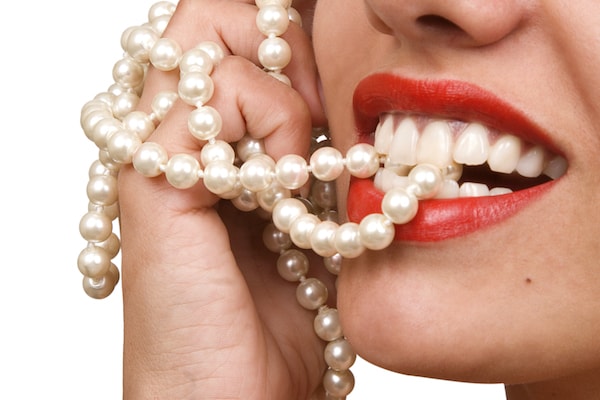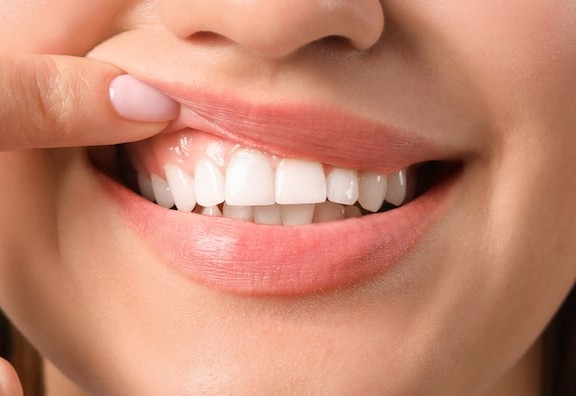 Our pearly whites aren’t there just to make us look pretty. Our teeth, along with the other structures around them, have a lot to say about our health in general. Interestingly, what our dentist sees in our mouth cab be a hint to what’s going on inside our body. Read on to learn how and when a simple mouth problem can actually be a symptom of a more serious health issue.
Our pearly whites aren’t there just to make us look pretty. Our teeth, along with the other structures around them, have a lot to say about our health in general. Interestingly, what our dentist sees in our mouth cab be a hint to what’s going on inside our body. Read on to learn how and when a simple mouth problem can actually be a symptom of a more serious health issue.
Flat and worn teeth are a common sign that the patient is a bruxist AKA a teeth grinder. Bruxism is a very common oral habit yet many people aren’t aware that they have this habit especially since most bruxists grind their teeth during sleep. Most patients dismiss bruxism as a simple habit that has nothing to do with their general health but it is a sign of stress.
Grinding can sometimes be so intense that the jaw may ache from clenching which, in turn, leads to headaches. The pain is due to spasms of the jaw muscle, and may extend down to the neck and upper back area. To relieve the symptoms, patients are advised to wear a mouth guard at night.
Teeth with extremely thin enamel can sometimes appear to be cracking. This is often a symptom of a condition called erosion. Dental erosion pertains to a type of tooth wear characterized by irreversible loss of tooth structure caused by dissolution by acids. Older people are more likely to suffer from dental erosion but it can occur on patients of any age.
The health condition that is most often associated with dental erosion is GERD or Gastro-Esophageal Reflux Disease. GERD is brought about by the weakness of the lower esophageal sphincter (LES) which is the ring of muscle at the junction of the stomach and esophagus. LES prevents the backflow of stomach contents into the esophagus. In GERD, the LES is weak or opens inappropriately allowing food and acids to flow back up from the stomach. The acid neutralizes the protective effect of the saliva while also disintegrating the tooth enamel.
Another condition that can cause dental erosion, particularly in younger patients, is bulimia. Bulimia is an eating disorder wherein the patient eats large amounts of food only to purge them shortly after they eat. The effect is the same as GERD where the food and stomach acids wash up from the stomach into the mouth to dissolve the tooth enamel.
Sores are common in patients who have a habit of biting the insides of their mouth. Sores that last for weeks necessitate a consultation with a dentist or doctor to rule out oral cancer. Every year, thousands of men and women are diagnosed with oral cancer and almost all of them start with simple white or red spots in the mouth. The survival rate for oral cancer is only a little above 30% mainly because it is often diagnosed too late. Those who are most likely to suffer from oral cancer are smokers and patients age 60 and above. Mouth sores that are raised and located on the undersurface of the tongue are often the ones suspected to be oral cancer.
There are a lot of things that can cause dry mouth from something as simple as dehydration to more complicated systemic diseases. Dry mouth, medically known as xerostomia, is said to be one of the early signs of diabetes and Sjogren’s syndrome. Diabetes is a metabolic disease characterized by abnormally high blood sugar levels. Other signs and symptoms of diabetes include frequent thirst and hunger, frequent urination, tingling sensation in the hands and feet and blurred vision.
Sjogren’s syndrome, on the other hand, is a condition where the body attacks its own glands including the salivary glands. It usually strikes people above 40 years old although people of any age can develop the condition. Women are more commonly affected and comprise as much as 90% of reported cases.
You will probably be surprised to learn that certain skin diseases may also have some oral manifestations. One example is lichen planus which appears as a white lacy pattern on the mucous membranes. It is often seen on the insides of the cheeks although it may also appear on other areas in the mouth. Lichen planus commonly affects people aged 30 to 70 years old. The majority of lichen planus cases present symptoms in the mouth first before they appear on other parts of the body. The condition may go away without treatment although there are instances where medical intervention is necessary.
Gums that look paler than their natural coral pink color could be a sign that the patient is suffering from anemia. Anemia is a condition where the amount of red blood cells is lower than normal or there are enough red blood cells but their hemoglobin content is inadequate. Either way, it results in body tissues not getting enough oxygen. There are different types of anemia and the treatment for each one varies. If you suspect that you might be suffering from anemia, please consult your doctor immediately to receive appropriate treatment.
Last, but not least, oral thrush is described as a condition where white patches develop on the tongue, insides the cheeks and the roof of the mouth. These patches develop as a result of the body’s inability to fight off infections due to a weakened immune system. Oral thrush is commonly seen in patients with HIV infection.
The health of the teeth, or oral health in general, is more important that anyone might realize. Oral health is practically a window to our overall health and this should motivate us to care for our mouth even more. Proper oral hygiene, as always, is important to prevent infections that may lead to problems such as tooth decay and oral diseases. Furthermore, aside from the conditions listed here, there are other conditions that have some manifestations in the mouth. Should you notice any problems in your oral health, be sure to contact your dentist immediately.





